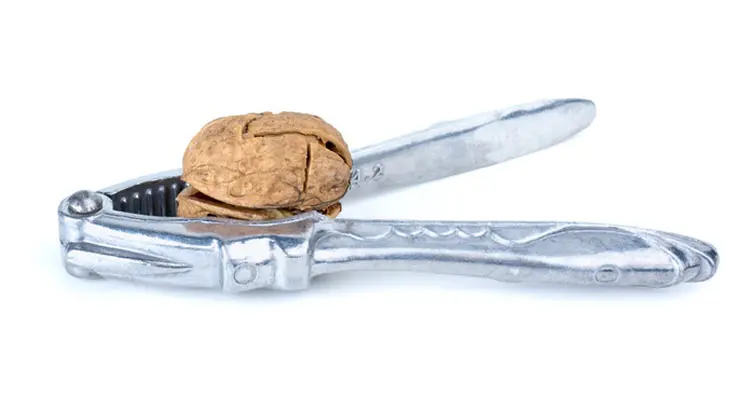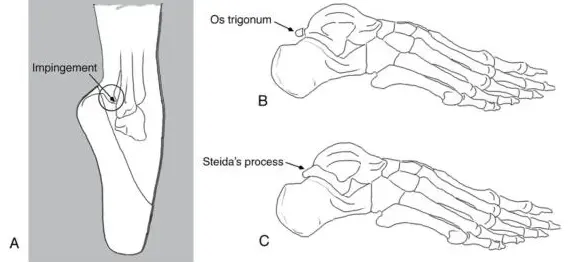Sports Injuries and Management
Os Trigonum Injury
The Nutcracker Phenomenon
The pain associated with os trigonum injury is often reported as a patient experiencing a deep unresolving pain in the posterior ankle joint following ankle injury, or associated with an overload of repetitive forceful toe pointing actions. Although the exact mechanism of an os trigonum injury varies it is commonly associated with plantarflexion type ankle injuries (such as an ankle sprain) or the result of repetitive plantarflexion (toe pointing) motions like kicking a football. With these movements the os trigonum can get pinched between the posterior aspect of the distal tibia and the posterosuperior aspect of the calcaneus, an action that is sometimes described as the “nutcracker phenomenon”. This nutcracker phenomenon is where the os trigonum with its surrounding soft tissues are caught wedged between the larger tibia, talus and calcaneal bones. Comparable to the action of a small nut being crushed in a nutcracker. This “nutcracker phenomenon” can lead to pain and inflammation of the involved soft tissues and bony structures causing what is referred to as os trigonum syndrome.
The presence of an os trigonum as highlighted in image “B” above isn’t sufficient on its own to create the syndrome. It must be accompanied with either “overuse” or a single traumatic event. Traumatic events as previously mentioned can include spraining your ankle, where as overuse may occur with the repetitive forceful plantarflexion associated with going “en pointe” or “demi-pointe” in ballet as seen in image “A” above, firmly striking a soccer ball with the “laces” of your boot when playing any of the football codes, or even from running down a relatively steep hill. All these actions produce compression on the posterior aspect of the ankle joint, potentially causing the soft tissue structures in the back of the ankle including the ankle joint capsule along with surrounding ligaments and tendons to react painfully.
Os Trigonum Injury And Flexor Hallucis Longus
As toe pointing increases further into range the flexor hallucis longus (FHL) tendon (one of the tissues involved in bending the big toe) tightens. Tightening of FHL can result in the application of pressure along the os trigonum whereby tension created via the flexor hallucis longus tendon and posterior ankle ligament tightening with the foot and ankle placed in a toe pointing position may contribute to initial injury and elicit pain in the posterior ankle joint in individuals with os trigonum injury. Os trigonum syndrome as such is often seen to be associated with pathology of the FHL tendon such as tenosynovitis given the anatomical proximity of the FHL tendon to the os trigonum.
Disclaimer: Sydney Physio Clinic does not endorse any treatments, procedures, products mentioned. This information is provided as an educational service and is not intended to serve as medical advice. Anyone seeking specific advice or assistance regarding Os Trigonum Injury should consult his or her general practitioner, sports medicine doctor or physiotherapist.



